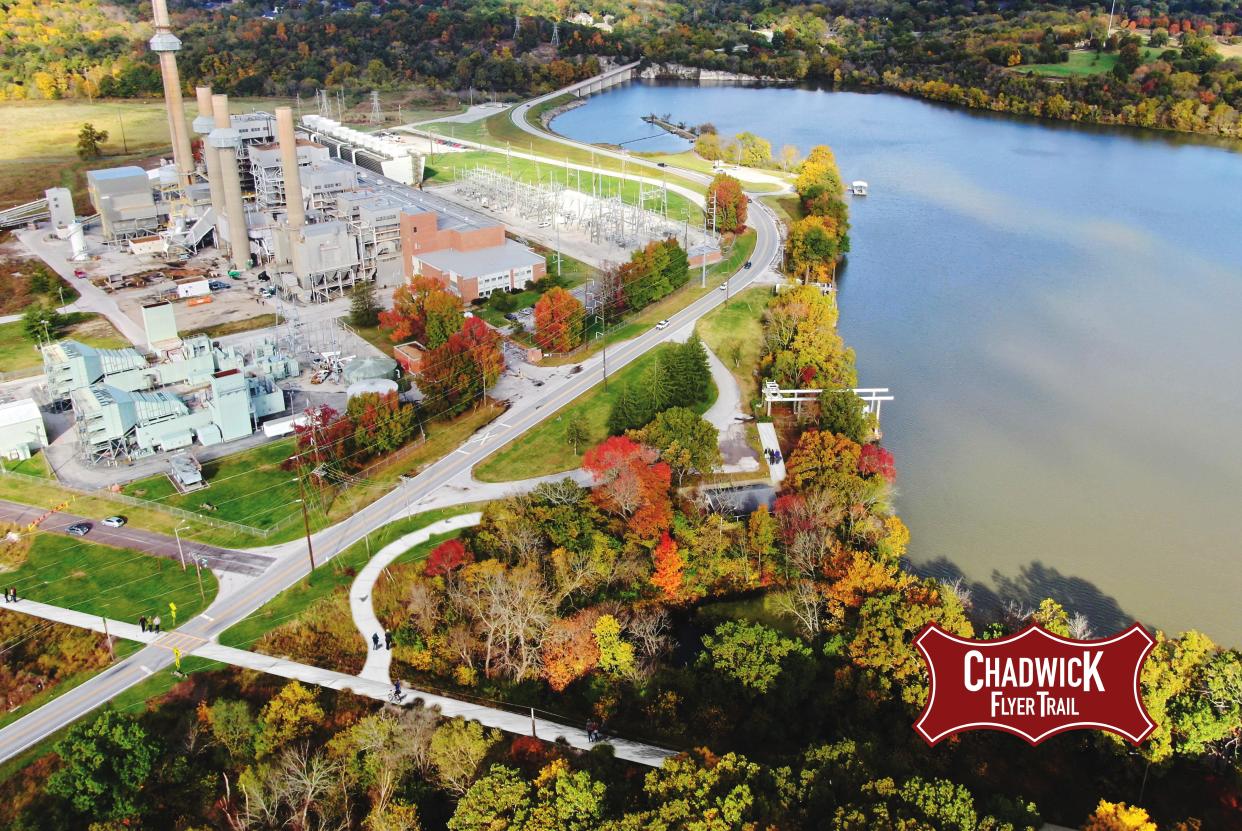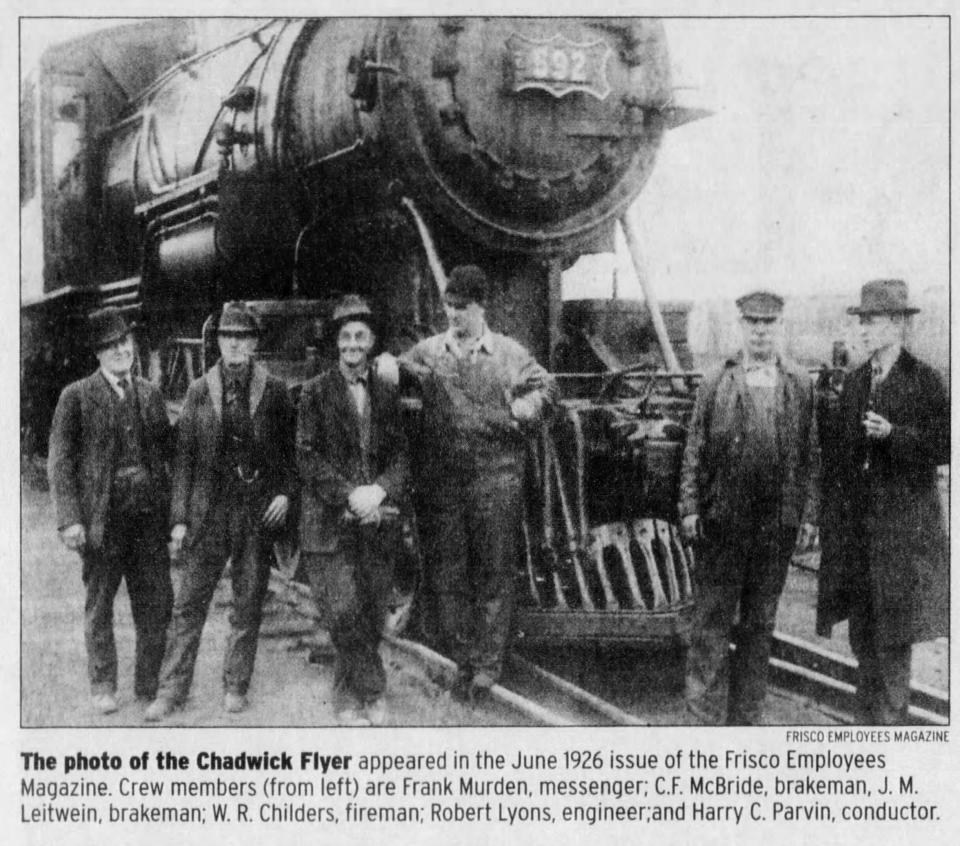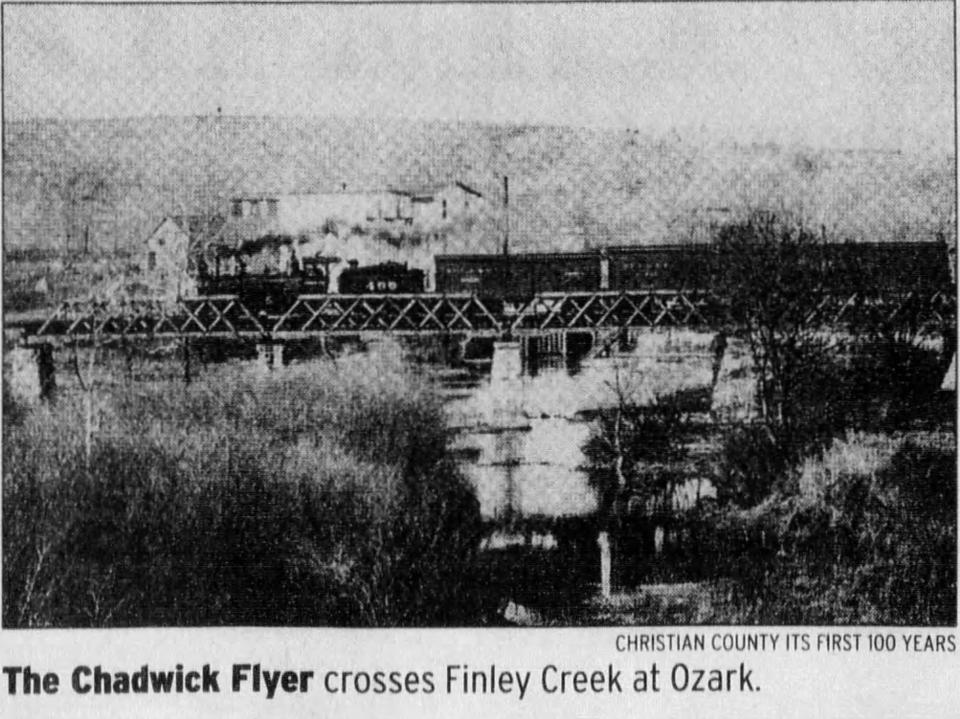New Chadwick Flyer Trail, expected to cost $20M, coming in next 5-10 years

It'll be awhile before the project is complete, but excitement was buzzing in the air during a showcase for the Chadwick Flyer Trail earlier this week.
The regional trail eventually will connect downtown Springfield with the Ozark Community Center in Christian County, spanning a total of 12 miles and costing approximately $20 million. The project may take five to 10 years to complete, said Mary Kromrey, executive director of Ozark Greenways.
"There's just so much opportunity that this trail will provide," Kromrey told a News-Leader reporter during the Tuesday showcase. "Of course, it's going to provide a way for folks to get outside and get some exercise and go for a stroll. It's also going to provide a really good transporation corridor."
Supporters say the Chadwick Flyer Trail will promote economic diversification and a sustainable tourism industry, while answering a demand for nature-based tourism. A projected $106 million in economic benefit would be generated over 20 years, according to literature at the showcase.
Kromrey emphasized that the timelines given are necessarily estimates.
"Whenever you're doing large-scale, capital infrastructure projects, you never have a hard and fast date," she said. "Now, you add in supply chain issues that we have and our current climate for construction, so if we were able to get funding right away, we think we could have it done within five to 10 years."
Along with the recreation aspect, the Chadwick Flyer Trail will provide a safe avenue for cyclists to travel between Springfield and Ozark.

"There are some tough streets out there," Kromrey said about cycling on busy roads. "This is going to provide a really safe and comfortable place (for cyclists.)"
Having outdoor recreation spaces also will help attract and retain a workforce that wants to stay in the Ozarks, Kromrey said.
"We know that trails are the way of the future," Kromrey said. "They're looking for really cool, neat spots where they can get outside, utilize the trails to go places, to hang out with friends, to connect, and what's really cool about this trail is that it also connects us to our past."
What is the Chadwick Flyer Trail?
The Chadwick Flyer was part of the old St. Louis San Francisco Frisco Railroad and was originally established to transport timber and railroad ties produced in Christian County for railroad expansion to the west. The Chadwick Flyer made daily trips on the corridor, carrying both cargo and passengers between Springfield and Chadwick, according to Ozark Greenways.
More:Plans call for part of Chadwick Flyer spur line to become recreational trail
The Chadwick Flyer in its heyday ran 34 miles from the Frisco station on Commercial Street and Benton Avenue to Chadwick, where a hand-operated wooden turntable allowed the train to turn around, according to News-Leader archives.
The line was extended to Chadwick in May 1883, where it primarily picked up timber logged in the Mark Twain National Forest. The timber was used by the railroad company for railway ties. The train also carried freight, passengers, mail, produce, animals and, more than likely, huge blocks of ice.

"It was a cheeky name because it went a whopping speed of 10 miles per hour, which a lot of folks can do on their bicycle, so you'll be going as fast as the train did," Kromrey said.
The majority of the Chadwick Branch was left abandoned after the Great Depression.
"Rail removal isn't needed at all once you get into Christian County because that was abandoned and reverted back to other folks or Burlington Northern (Railroad) kept it, but the rails largely have been removed," Kromrey said.
The idea to bring a trail connecting Springfield to Ozark has been in the works for a while, but it took off in 2017, Kromrey said.

Why is the estimated cost $20 million?
The projected cost is a "very, very rough, high-level" estimate that the trail will cost $20 million, Kromrey said.
"That might seem shocking, but compare that to a 12-mile road project," Kromrey said.
There are high-dollar features that will have to be mapped and built, including crossing over a highway and a double-trestle rail bridge.
"Those are really large ticket items (with) lots of engineering costs," she said.
An online survey is available for folks to share their input regarding the Chadwick Flyer Trail. Learn more about the project on the Ozark Greenways website.
Sara Karnes is an Outdoors Reporter with the Springfield News-Leader. Follow along with her adventures on Twitter and Instagram @Sara_Karnes. Got a story to tell? Email her at skarnes@springfi.gannett.com.
Open house
The Chadwick Flyer Trail offers a vital connection between the City of Ozark and the City of Springfield. It is a part of the growing regional trail system. Springfield is our state's third largest metro, and this project highlights our collaborative spirit and allows us to come together around not only a part of our history, but also our future. It will allow us to celebrate and develop our unique identity of place and foster an experience economy that supports recreation, culture, and tourism. Best of all, it will connect us to our beautiful outdoors.
Approximately 7,400 linear feet have been completed in three segments in the City of Ozark.
This article originally appeared on Springfield News-Leader: Projected costs for Chadwick Flyer Trail estimated at $20M

